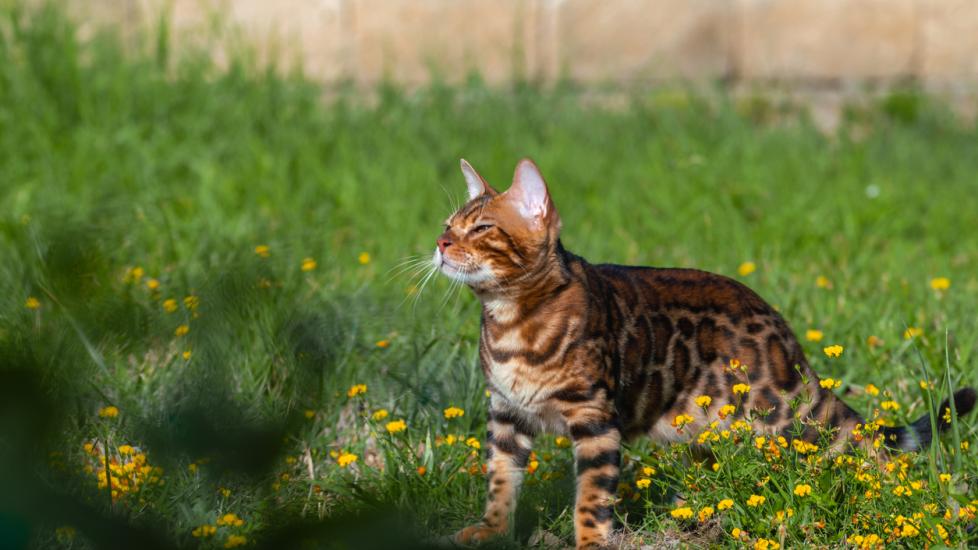Plague in Cats
What Is Plague in Cats?
Plague is a rare but potentially fatal bacterial disease that affects humans and other mammals including cats. It is caused by the bacterium Yersinia pestis which is primarily transmitted by the fleas of rodents.
Nicknamed “Black Death,” this disease killed millions of people in the Middle Ages, so it was classified as a pestilence or plague. Today, modern antibiotics used to treat plague are lifesaving.
A few plague cases occur every year in the United States and throughout the world, including Europe, Asia, Africa, and South America. According to the Centers for Disease Control (CDC), there has been an average of six human plague cases a year in the U.S. with the majority in New Mexico, Colorado, Arizona, and California.
Symptoms of Plague in Cats
In mammals, plague is transmitted through flea bites (bubonic), contact with contaminated fluid or tissue (septicemic), or infectious droplets (pneumonic).
Cats are most commonly affected by bubonic plague. The bacterium enters the body through the cat’s mouth after ingesting an infected animal, or through the skin from a flea bite that travels to the lymph nodes. Onset of symptoms is one to four days after exposure and includes:
-
Fever (up to 106 F)
-
Decreased appetite (anorexia)
-
Lethargy
-
Enlarged lymph nodes, especially under the jaw
Septicemic plague occurs when the bacterium continues to spread through the bloodstream and affects organs including the spleen, liver, and heart. In this case, lymph nodes will not be enlarged, but the cat will likely still have the other signs of bubonic plague. Additional symptoms may include:
-
Vomiting
-
Diarrhea
-
Elevated heart rate
-
Trouble breathing
Pneumonic plague affects the lungs. Cats with pneumonic plague have all the clinical signs of septicemic plague in addition to:
-
Cough
-
Abnormal lung sounds, such as crackles and wheezes
Causes of Plague in Cats
Rodents are hosts of the bacterium Yersinia pestis usually transmitted via flea bites. The most affected rodents are prairie dogs, mice, woodrats, squirrels, chipmunks, and rabbits. All mammals, however, are susceptible to plague including humans (zoonosis disease).
Cats are infected with plague primarily by getting bitten by an infected flea or eating an infected rodent.
How Veterinarians Diagnose Plague in Cats
Your veterinarian collects a detailed history including any travel, flea exposure, and outdoor activities such as hunting to determine if your cat has been exposed to plague.
He or she will then examine your cat for any fever, enlarged lymph nodes, or breathing difficulty. The vet may also recommend a complete blood count, serum blood chemistry, and urinalysis for a baseline evaluation. Plague is rare in cats, and your vet can confirm the diagnosis by ruling out more common illnesses such as other bacterial or viral infections.
Often, Yersinia pestis can be visually identified by examining samples of blood under a microscope, as well as samples of blood, saliva, or fluid from your cat’s lymph nodes. Cultures and specialized lab testing may also be submitted to help with the diagnosis.
Treatment of Plague in Cats
Without rapid treatment, plague in cats can be fatal. Treatment typically includes antibiotics and hospitalization for supportive care such as IV fluids and treatment of any vomiting, diarrhea, and anorexia. Oxygen therapy may be needed for cats that have trouble breathing.
Plague is a reportable disease, which means that doctors and veterinarians are required to report it to a public health authority for contact tracing and infection tracking.
Recovery and Management of Plague in Cats
Early and aggressive treatment is key to successful plague management. Cats remain infectious for up to 72 hours after starting antibiotic treatment and should stay hospitalized during that time.
Antibiotics are usually prescribed for 10-21 days, and your cat should improve within the first few days of treatment. Most cats that respond favorably to initial treatment make a complete recovery and go on to live normal lives.
Prevention of Plague in Cats
Transmission from flea bites is a common source of plague in cats, so regular flea and tick prevention treatment is highly recommended.
If you live in an area where there are known cases of plague, it may be wise to keep your cat indoors to minimize exposure and risk. It is also a good idea to reduce the rodent habitat around your home by removing brush, rock piles, and outdoor clutter.
Additional public health education, resources, and general information regarding plague, can be found on the CDC website.
There is currently no vaccination available for humans or pets against plague in the U.S., so prevention is the best defense.
Featured Image: iStock/Armastas
Help us make PetMD better
Was this article helpful?
